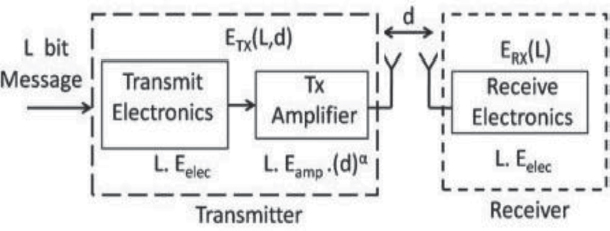
Figure 1. The Radio Model
ADCAIJ: Advances in Distributed Computing and Artificial Intelligence Journal
Regular Issue, Vol. 11 N. 3 (2022), 285-307
eISSN: 2255-2863
DOI: https://doi.org/10.14201/adcaij.27885
FBCHS: Fuzzy Based Cluster Head Selection Protocol to Enhance Network Lifetime of WSN
Vipul Narayana and A. K. Danielb
a, b Department of Computer Science and Engineering, Madan Mohan Malaviya University, Gorakhpur, UP, India, 273008
✉ vipulupsainian2470@gmail.com, danielak@rediffmail.com
ABSTRACT
With enormous evolution in Microelectronics, Wireless Sensor Networks (WSNs) have played a vital role in every aspect of daily life. Technological advancement has led to new ways of thinking and of developing infrastructure for sensing, monitoring, and computational tasks. The sensor network constitutes multiple sensor nodes for monitoring, tracking, and surveillance of remote objects in the network area. Battery replacement and recharging are almost impossible; therefore, the aim is to develop an efficient routing protocol for the sensor network. The Fuzzy Based Cluster Head Selection (FBCHS) protocol is proposed, which partitions the network into several regions based on node energy levels. The proposed protocol uses an artificial intelligence technique to select the Cluster Head (CH) based on maximum node Residual Energy (RE) and minimum distance. The transmission of data to the Base Station (BS) is accomplished via static clustering and the hybrid routing technique. The simulation results of the FBCHS protocol are com- pared to the SEP protocol and show improvement in the stability period and improved overall performance of the network.
KEYWORDS
clustering; cluster head; energy efficient; fuzzy logic; residual energy; sensor network
1. Introduction
In the last few years, designing an efficient network has become important in cloud computing, IoT, auto- mobile, precision agriculture, artificial intelligence, etc. The WSN consists of multiple Sensor Nodes (SNs) and wireless technology. The distribution of nodes is random for the data collection task in the network. The data is collected from sensors which measure a series of environmental parameters: temperature, hu- midity, rain, fog, and transmitted to BS. In Narayan and Daniel, 2019, the authors said that communication via single-hop sends data directly while intermediate nodes follow multi-hop communication. The sensing and data transmission operations consume significant energy, which causes energy issues in the network. In Narayan and Daniel, 2020, the authors said that the hierarchical architecture minimizes the problems. Clustering is the technique that divides the network into smaller cluster groups to increase system performance. The CH is selected and plays an essential role in processing, communication, and data transmission tasks in the network. In Deepa and Suguna, 2020, the authors said that clustering is effective communication strategies and in minimizing the energy issues in the network. It also helps prevent frequent collisions and overhead and controls data congestion in the network. In Narayan and Daniel, 2021, it is stated that in the existing clustering techniques, the CH was selected on the basis of RE of Sensor Node (SN). Therefore, an energy-efficient solution was introduced to limit the network's energy consumption for CH nodes. In Elhoseny et al., 2020, the authors said that various CH selection approaches were utilized to reduce network energy issues and increase system performance. The CH was chosen randomly among the nodes, adding density as one more criterion and transmitting the data to BS. There is a need to develop an efficient routing protocol that utilizes minimum energy dissipation of nodes inside the network, and that reliably forwards the data to the BS.
The proposed FBCHS protocol is introduced. The static clustering and hybrid routing mechanism is used to transmit data to BS. The Normal Node (N) and Super Node (S) are dispersed in the different regions depending on the SNs energy level for proficient coverage of the total area of the network. The hybrid routing technique is utilized for the purposes of data transmission to the BS, where the Normal Nodes communicate directly to the BS. The clustering technique transmits data to BS in Super Nodes of Region- 1 (R1) to Region-4 (R4). On the basis of the Artificial Intelligence (AI) approach, the fuzzy logic technique is applied for the CH selection process. The SN uses parameters such as RE of node and minimum node distance to the BS. Thus, AI-based CH selection balances network energy consumption inside the network and enhances network longevity. The performance of the FBCHS protocol is contrasted with the SEP protocol in terms of the stability period, network performance, alive nodes number, a packet transmitted to BS, percentage of the covered area, and network data transmission per round. The remainder of the paper is organized as follows: Section 2 discusses the issues associated with design and related work. The radio model is presented in Section 3. Section 4 proposes the Fuzzy Based Cluster Head Selection Protocol. Section 5 outlines simulation and analytical results, and finally concludes the paper with future lines of research.
2. Related Work
The WSN comprises several nodes that operate in a specific environment for data collection and transmission via single or multi-hop techniques in the network. The data transfer from CH to BS is an im- portant task in a sensor network. Various clustering techniques have been proposed in the last decades for WSN. The Low Energy Adaptive Clustering Hierarchy (LEACH) protocol uses certain probability parameters for CH selection per round. Each node has an equal probability of selecting a CH in the protocol and follows a single hop for data transmission to BS. In Nazari Talooki et al., 2014, the authors proposed a clustering technique for the uniform distribution of energy across the network. The technique has a self-organized feature and minimizes load balancing problems in multi-hop routing techniques. The pioneer clustering scheme is in the network. The selection of the CH is performed using the probabilistic technique. The multitier communication architecture is used for data transmission tasks in the network. In the first step, cluster formation takes place and relays data to their cluster leader. In the second step, the CHs aggregate all data and transmit it to BS. CHs selection is not uniform in the network due to its probabilistic nature. Thus, some regions have more CH than others, which causes load balancing problems and affects network performance. In Kumar et al., 2021, the authors proposed the Improved Density Control and Divide Rule (IDDR) protocol. The network area is divided on the basis of node density. The divide and rule techniques were used for efficient energy utilization in the network. Each node’s energy and status information were managed by BS. The CH selection process was random in the protocol, and BS’ responsibility was to discard low-energy SNs for CH selection. In some cases, BS could not find the node status located far from it. The protocol improved the network's performance compared to the LEACH Protocol. In Latif et al., 2015, the authors introduced a protocol that partitioned the network into regions and a clustering mechanism for efficient data transmission to BS. The network was partitioned into multiple rectangular regions and sub-regions to balance energy consumption. The corner node in the sub-regions experienced a long distance for data transmission to BS than a node nearer to BS. In Singh and Daniel, 2015, the authors proposed a technique to address the issue of load balancing in sensor networks. SNs were randomly distributed in the multiple square regions, and static clustering was performed for the heterogeneous nodes. The protocol selected CH depending on the RE of SNs. The protocol enhanced the network lifetime but did not solve the larger problem of network holes. The various fault tolerance routing protocols were discussed. Furthermore, the majority of known fault tolerance techniques include hardware and path redundancy in the network. The Dual-Homed fault-tolerant Routing (DHR) protocol was proposed to solve the problem in the network. The dual CH selection mechanism was used and enhanced the performance of the network system. In Latif et al., 2016, in a large network area, the authors proposed a routing strategy to reduce node energy usage inside the network. The protocol self-adjusts the node's power for a small distant node within the area and improves the system's performance. In Yang et al., 2018, the authors proposed a clustering technique in which the network was partitioned into unequal regions and performs static clustering. The sub-regions were further partitioned in quadrilaterals to minimize the distance within the network. The load balancing was achieved, however, there were overhead increases in the protocol. In Behzad, 2018, the authors proposed a protocol for the analysis of the network lifetime based on the energy models. It was observed that theoretical analysis has more energy values in different network areas. In Narayan and Daniel, 2022, the authors proposed an algorithm for optimal energy inside the network. The working protocol was the same as LEACH but used a multi- hop technique for data transfer in the network. The protocol reduced the communication distance between CHs and improved network performance. In Sharma and Kumar, 2018, the authors proposed an energy-based routing protocol to reduce cluster node transmission distance. The new energy model is used in which the transmission distance is varied by changing the cluster position in the protocol and enhancing the system's performance. In Sirsikar and Chandak, 2018, the authors proposed a model in which the network was partitioned in the rectangular region and concentric ring. The static clustering technique was used to transmit data to BS. The simulation performance of the partitioned rectangular region was better in comparison to concentric ring in terms of lifetime. In Tang et al., 2018, the authors proposed Physarum-based protocol using the energy harvesting technique. The protocol used a distributed routing algorithm to reduce time and minimize energy usage in the network. The hot spot problem was minimized by using a distributed algorithm and unequal clustering. The Fuzzy-AI technique simulated the problem in a more precise manner, solving service selection problems in the network. In Faiz and Daniel, 2021, the authors proposed the Fuzzy model. The model selected the user-defined input parameters on the basis of selected parameters; the best cloud offered to users for service. The Fuzzy concept was used for the CH selection for efficient energy utilization among SNs in WSN applications. In Jayaraman and Dhulipala, 2021, the authors proposed a Fuzzy Logic-based CH selection mechanism. CH energy, the centrality of nodes, the distance between nodes, and the base station were used as fuzzy variables because of their Mamdani fuzzy inference system. The mechanism utilized optimal clusters and selected CH on the basis of the maximum RE of the node in the network. The protocol achieved load balancing, efficient utilization of energy inside the network, and enhanced network performance. In Batra and Kushwah, 2019, the authors proposed a fuzzy logic based CH selection method to extend the network lifetime. The protocol utilized optimal nodes, shortest distance between CH and BS, maximum balanced energy after each round, and CH rotation in the network. The k-means method was utilized for cluster formation in the network, and the CH was selected using fuzzy logic to increase system performance. In Shivappa and Manvi, 2019, the authors proposed a centralized CH selection mechanism and fuzzy approach for forming clusters in the network. The BS node used fuzzy c-means to find cluster centers and member nodes. The fuzzy FIS calculated the nodes’ fitness, RE of SNs and distance to the cluster center as input parameters. The CH is chosen from each cluster by using distance and maximum node RE as parameters. The proposed mechanism utilized optimal nodes inside the network and improved system performance. In Choudhary et al., 2022, the authors proposed fuzzy base routing protocol for the sensor network. The quality-of-service parameters for sensor network was enhanced by utilizing most trusted values consideration for CH selection. The CH selection was based on the fuzzy if/then rule for optimal route selection for data transmission to BS and significantly improved system performance. In Dwivedi and Sharma, 2020, the authors have proposed a fuzzy base protocol for efficient clustering and CH selection in the network. The fuzzy-based rules were used for optimal cluster inside the network and triangular inequality theorem for shortest distance for data transmission between target and base station. The proposed protocol minimized the transmission distance and enhanced system performance.
3. Radio Model
The radio model transmits and receives the ‘L’ data bits in WSN. In terms of how far away the transmitter and receiver are from each other, the radio model can be called a free space or multipath model. Figure 1 represents the radio model (Wan and Du, 2011; Mehra, Doja and Alam, 2020).

Figure 1. The Radio Model
If the threshold distance ‘d0’ is more than the distance ‘d’, then the transmission energy required for the free space model is:
If the distance 'd0' is less than the threshold distance 'd,' then the transmission energy required for the multipath model is:
Where,
L is the bits needed for sending data from one sensor to another, ɛfs & ɛmp represent the amount of power for free space and multipath models, and Eelec is the electronic energy required for the signal and
The received energy is calculated as follows:
The CM energy is:
The CH energy is:
CHd is the distance from CH, BSd is the distance from BS, and EAE is the total aggregated energy.
4. Proposed FBCHS protocol
The data gathering process is efficiently performed when the coverage area is large. If the monitoring area is large, some portion of the area is uncovered and called a coverage hole. The one possible solution to this issue is to partition the network into multiple regions on the basis of their RE levels of SNs and fixed coordinates of the X–Y dimensions. In the process of deploying SNs in the network area, some SNs are deployed far from the area, and the corner node needs high energy to relay the data to the BS. Therefore, to solve this issue, high-energy nodes called Super Nodes (S) are deployed in far distance places, and Normal Nodes (N) are positioned near the BS in Region 5. Let us suppose that SNs are the total nodes in the network area, and the fraction of Super Nodes is S. The Normal Node Initial Energy (IE) is ‘E0’, and the Super Node has (1+Eα) more energy than Normal Node. In Region 5, the Normal Node transmit data to BS in a single hop, while Super Nodes in Regions 1, 2, 3, and 4 send their data through CH. The Normal Node dies quickly because it consumes more energy than indirect data transmission tasks in the network. The direct transmission takes more energy; therefore, the clustering technique is used for SN to transmit data to BS. The FBCHS Protocol uses the optimal number of CH per round for Super Node regions and enhances the network performance.
4.1. Fuzzy Based Cluster Head Selection (FBCHS) protocol
Consider a network with a size of 100 × 100 m2 and a location of BS in the approximate middle (50 × 50 m2). The network is partitioned into different regions (Region 1 to Region 5) with fixed coordinates. The SNs are distributed uniformly in the fixed predefined regions. The Normal Node and Super Node are used in the predefined regions. The position of the Super Node and the BS is static following the deployment process. The Normal Node transmits data to BS while the Super Node collects all data from cluster nodes and then transmits it to the BS.
The proposed FBCHS protocol partitioned the network into five regions R1, R2, R3, R4, R5 as shown in Figure 2. The SNs are randomly distributed in the network of 100 × 100 m2. The used SNs are Super Nodes and Normal Nodes. Regions R1, R2, R3, and R4 comprise Super Nodes, whereas region R5 comprises Normal Nodes. Thus, the Normal and Super Nodes are divided in the ratio of 7:3 in the entire network. The regions R1, R2, R3, R4, R5 divide the network in the ratio of 20:20:12:12:36. The relationship of regions with coordinates a, b, c, and d is represented below.
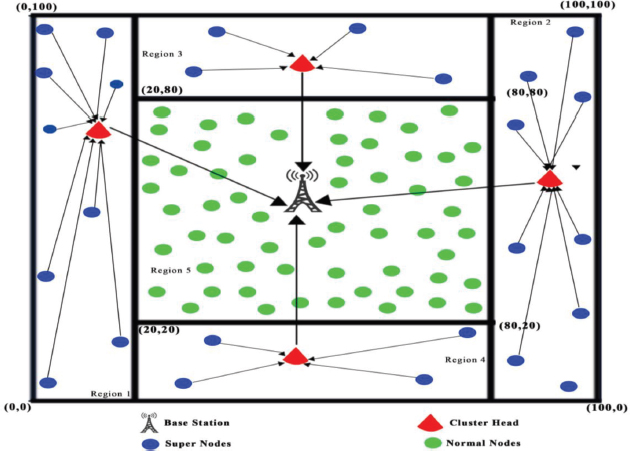
Figure 2. Network Architecture of Fuzzy Based Cluster Head Selection (FBCHS) protocol
Where, coordinates a = 0, b = 20, c = 80, d = 100.
4.2. CH Selection Formula
The Probability of Normal (PN) and Super (PS) Nodes to be CH are, respectively.
Where φ stands for the additional fraction of energy present in Super Node (as opposed to the Normal Node), T is the fraction of SNs over the total SNs. The thresholds for Normal SNs (T) and Super SNs (TS) are defined as:
Where, RN is Residual Energy, DN is the Distance from BS. DN and δ′ are expressed as:
The notations are defined in following Table 1.
Table 1. Notations and Descriptions
Symbols |
Meaning |
PO |
Optimal Probability for Number of Cluster Heads. |
Φ |
Additional Fraction of Energy in Super Node. |
T |
Fraction of SNs Over the Total SNs. |
PN |
Probability for Normal Node to be CH. |
PS |
Probability for Super Node to be CH. |
TN |
The Threshold for Normal Node. |
TS |
The Threshold for Super Node. |
Nx |
x Coordinates of ith Node. |
Ny |
y Coordinates of ith Node. |
BSx |
x Coordinates of Base Station. |
BSy |
x Coordinates of Base Station. |
DN |
ith Node Distance from BS. |
RN |
Residual Energy. |
δ′ |
Optimal Cluster Number. |
Ni |
ith Node. |
Emf |
Free Space Energy. |
Emm |
Multipath Fading Energy. |
ω |
The Number of Associated Cluster Heads. |
ET,R |
Energy Transmission/ Reception. |
ED |
Data Aggregation Energy. |
β |
Network Size. |
4.3. Fuzzy based CH Selection using AI-Technique
To solve the load balance problem in the WSN, a fuzzy-based technology called «Fuzzy-AI» is introduced. CH selection in WSN routing protocols is based on a single criterion, however, we have taken two parameters; RE of SNs and minimum BS distance for the FBCHS protocol. The input function chosen for CH selection is the distance to BS and the RE of the SNs, and they are converted into their respective fuzzy sets. The mathe- matical representation of the same is as follows:
Where D and RE are the universes of discourse for Distance and node Residual Energy, respectively. Dt and rl represent the individual element of sets ‘D’ and ‘RE’, μDistance(dt) and μRE(rl) are membership functions. The process of CH selection takes place after the successful deployment of SNs in the monitoring area.
The fuzzy logic model is utilized to solve uncertainty in CH selection. The CH is selected using the parameters minimum BS distance, and the best node was chosen to serve as CH (Maurya and Daniel, 2015). Generally, a Fuzzy system consists of different units:
Fuzzifier: In this unit, input variable distance and RE are given crisp input, converted into corresponding fuzzy input using a fuzzy set.
Rule base: The FIS unit stores all IF-THEN-ELSE rules determined by a person with domain expertise.
Fuzzy rules represent the active role of the fuzzy system.
Fuzzy Inference Engine (FIS): The key component of a fuzzy system provides a decision-making pro- cess. This unit uses IF-THEN-ELSE rules to design the required decision rules using «AND» or «OR» opera- tor. The FIS for the proposed work is shown in Figure 3.
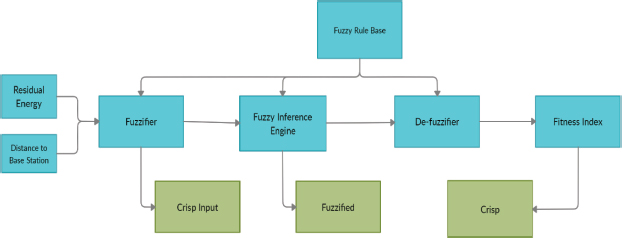
Figure 3. Block Diagram of Fuzzy Inference Engine (FIS)
Defuzzification: In this unit fuzzy set is converted into a crisp set with the help of FIS and its rule base.
A. Fuzzification of Input
This phase converts crisp values into fuzzy variables. Table 2 shows the crisp input range values for ‘Dis- tance’ on a scale of 0-100, where the Fuzzy output variable represents the membership values Short, Consid- erable, and Far as shown in Figure 4.
Table 2. Range for Fuzzy input parameters (Distance)
S.No. |
Crisp Value |
Fuzzy variable |
1 |
[0 0 45] |
SHORT |
2 |
[40 55 65] |
CONSIDERABLE |
3 |
[60 85 100] |
FAR |
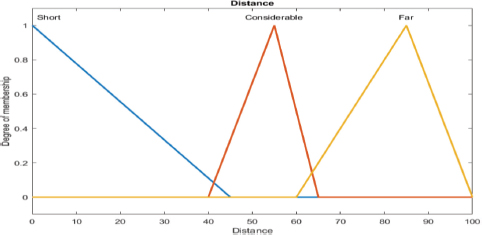
Figure 4. Membership function for ‘Distance’ on the scale of 0-100
Similarly, Table 3 shows the crisp input values for ‘Residual Energy’ on a scale of 0– 1. The fuzzy output variable shows the membership value Low, Reasonable, and High as shown in Figure 5.
Table 3. Range for Fuzzy input parameters (RE)
Sr. No. |
Crisp Value |
Fuzzy variable |
1 |
[0 0 0.3] |
LOW |
2 |
[0.25 0.6 0.8] |
MEDIUM |
3 |
[0.75 0.85 1] |
HIGH |
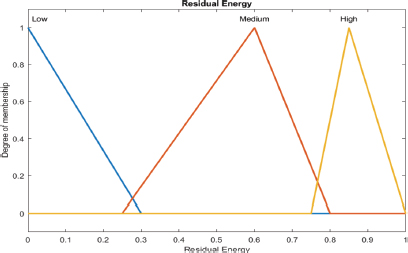
Figure 5. Membership function for ‘RE’ on the scale of 0-1
B. Output Membership Function
The membership functions are μA(Dt), and μB(RE). Both variables are associated with Lower and Upper threshold values. The respective thresholds are TH1, TH2, TH3 and TH4. The activation point of the model is a lower threshold value, and the model operates in both the upper and lower threshold regions. [14].
Let Dt and RE be represented for the inputs as Distance (Dt) and Residual Energy (RE), respectively. The fuzzy variables for output representation, using the Membership Function (MF) for CH selection, are used. ‘VLOW’ represents very low membership, ‘LOW’, ‘MEDIUM’, ‘HIGH’ and ‘VHIGH’ represents very high membership, as shown in Table 4. Figure 6. shows Fuzzy MF variables for CH selection on a scale of 0-10. The FBCHS system for computing likelihood is shown in Figure 7.
Table 4. Fuzzy MF variables for CH
No. |
Linguistic Term |
Values |
1 |
[0 0 1 2] |
VLow |
2 |
[1.5 2.5 3 3.5] |
Low |
3 |
[3.2 4.5 5 5.5] |
Medium |
4 |
[5.2 6 6.5 7] |
High |
5 |
[6.8 7.5 9 10] |
VHigh |
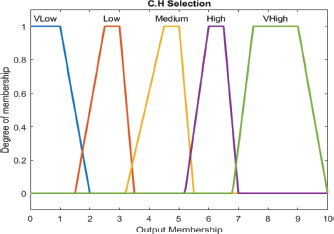
Figure 6. Membership function for ‘CH Selection’ on the scale of 0-10
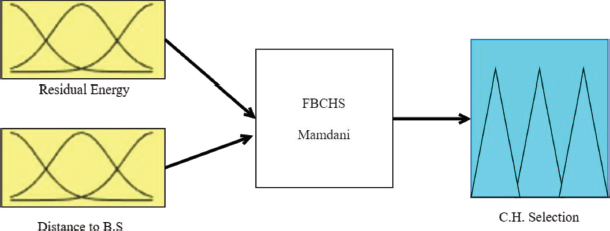
Figure 7. FBCHS system for computing the likelihood
C. Evaluation of Rules for CH Selection
The two parameters used for CH selection in Super Nodes are distance to BS and RE of the Super Node. Three membership functions are used to represent different degrees of the input parameters are shown in Table 5. The CH column of Table 5 shows various output functions.
Table 5. Fuzzy rules
Rules |
Distance to BS |
RE |
CH |
1 |
Short |
Low |
Medium |
2 |
Short |
Medium |
Medium |
3 |
Short |
High |
VHigh |
4 |
Far |
Low |
VLow |
5 |
Far |
Medium |
Medium |
6 |
Far |
High |
Medium |
7 |
Considerable |
Low |
Medium |
8 |
Considerable |
Medium |
High |
9 |
Considerable |
High |
High |
The MFs are selected using defined Fuzzy rules embedded in the FIS. The order used for the priority of parameters for selecting a CH is defined using equation (16) as follows:
4.4. Fuzzy Inference Rules
1. IF Dt is Short Λ RE is Low; CH Selection probability is ‘Medium’.
2. IF Dt is Short Λ RE is Medium; CH Selection probability is ‘High’.
3. IF Dt is Short Λ RE is High; CH Selection probability is ‘VHigh’.
4. IF Dt is Far Λ RE is Low; CH Selection probability is ‘VLow’
5. IF Dt is Far Λ RE is Medium; CH Selection probability is ‘Medium’
6. IF Dt is Far Λ RE is High; CH Selection probability is ‘Medium’
7. IF Dt is Considerable Λ RE is High; CH Selection probability is ‘High’
8. IF Dt is Considerable Λ RE is Medium; CH Selection probability is ‘High’
9. IF Dt is Considerable Λ RE is Low; CH Selection probability is ‘Medium’
Algorithm 1: FBCHS Protocol
Initialization: R = Region, OA = Outer Area, IA = Inner Area, SNs = Sensor Nodes, S = Super Nodes, N = Normal Nodes, RE = Residual Energy, D = Distance, CH = Cluster Head, CM = Cluster Member, BS = Base Station.
1: For all r in Ri do
2: If (r ∈ OA)
3: SNs←S
4: Calculate RE
5: Calculate D
6: For all i in SNsr do
7: Select max (RE)
8: Select min (D)
9: If (max (RE) && min (D))
10: i← CH
11: else
12: i←CM
13: End If
14: End For
15: else
16: SNs←N
17: End If
18: End For
19: For all r in Ri do
20: For all i in SNsr do
21: If (i∈N&&i∉ CH)
22: Aggregate (data)
23: Send (data → BS)
24: End If
25: If (i∈N&&i∉ CH)
26: Send (data → CH)
27: End If
28: If (i∈ N)
29: Send (data → BS)
30: End If
31: End For
32: End For
4.5. VALIDATION
If a Normal Nodes senses data, it directly transmits the data to the BS while Super Nodes transmit the data using the clustering technique and then transmit it to the BS. The demonstration for CH node selection using five Super Nodes is an example of understanding the whole process.
Let the set represent Super Nodes using distance from the BS as Dt = {45, 55, 65, 85, 100}, and equation
(14) is used for the computation of fuzzy membership values as follows:
Where, Th1 = 60, Th2 = 80, and Dt values are measured in meters.
Let the set represent the Residual Energy (RE) of each node as RE = {0.3, 0.25, 0.6, 0.85, 0.95}, and equation (15) is used for the computation of corresponding fuzzy membership values as follows:
Where, Th3 = 0.3, Th4 = 0.8, and RE values are measured in joules.
Now, compute the membership values of Dt and RE with the help of Membership Functions (MF) for the input values shown in Tables 6 and 7. In Table 6, for the Dt {45, 55, 65, 85, 100}, the values of memberships are{1, 1, 0.25, 0, 0}, respectively. Table 7 shows the RE set {0.3, 0.25, 0.6, 0.85, 0.95} and, the memberships vlaues as {0, 0.6, 1, 1, 1}.
Table 6. Membership value of variable ‘Dt’
Dt |
Membership value |
45 |
1 |
55 |
1 |
65 |
0.25 |
85 |
0 |
100 |
0 |
Table 7. Membership of variable ‘RE’
RE |
Membership value |
0.25 |
0 |
0.3 |
0 |
0.6 |
0.6 |
0.85 |
1 |
0.95 |
1 |
The AND (Λ) operator is used to compute the fuzzy relation. The membership values of Dt and RE of sensor nodes are listed in Table 8.
Table 8. Membership of Dt AND (Λ) RE using Fuzzy process
Dt |
45 |
55 |
65 |
85 |
100 |
RE |
|
|
|
|
|
0.25 |
0 Λ 1 |
0 Λ 1 |
0Λ 0.25 |
0Λ 0 |
0Λ0 |
0.30 |
0 Λ 1 |
0 Λ 1 |
0Λ0.25 |
0Λ0 |
0Λ0 |
0.60 |
0.60Λ1 |
0.60Λ1 |
0.60Λ 0.25 |
0.60Λ 0 |
0.60Λ0 |
0.85 |
1Λ1 |
1Λ1 |
1Λ0.25 |
1Λ0 |
1Λ0 |
0.95 |
1Λ1 |
1Λ1 |
1Λ0.25 |
1Λ0 |
1Λ0 |
The outcome of Λ operation applied to the Membership Values (MV) of Dt and RE is represented in Table 9.
Table 9. Outcome of the fuzzy (Λ) operation on MV
Dt |
45 |
55 |
65 |
85 |
100 |
RE |
|
|
|
|
|
0.25 |
0 |
0 |
0 |
0 |
0 |
0.3 |
0 |
0 |
0 |
0 |
0 |
0.6 |
0.6 |
0.6 |
0.25 |
0 |
0 |
0.85 |
1 |
1 |
0.25 |
0 |
0 |
0.95 |
1 |
1 |
0.25 |
0 |
0 |
Table 10 shows the various combinations of maximum membership input values of Dt and RE.
Table 10. Fuzzy output for RE
Dt |
45 |
55 |
RE |
|
|
0.85 |
1 |
1 |
0.95 |
1 |
1 |
The Membership Function (MF) for Dt and RE as per the defined rules is represented in Table 11.
Table 11. Degree of MF (Fuzzy Output)
Sl. No. |
Dt |
Membership function (MF) |
RE |
Membership function (MF) |
1 |
45 |
Short |
0.85 |
High |
2 |
55 |
Short |
0.85 |
High |
3 |
45 |
Short |
0.95 |
High |
4 |
55 |
Short |
0.95 |
High |
The total possible arrangements of Distance (Dt) and Residual Energy (RE) of reachable nodes are as follows:
• Dt1 = 45 and RE1 = 0.85 • Dt2= 55 and RE2 = 0.85 • Dt3= 45 and RE3 = 0.95 • Dt4= 55 and RE4= 0.95
The node to be elected as CH can be any possible arrangement among the Super Nodes. As per rule 1, using the defined rule set, the best arrangement is possible when the value of Dt to BS is 45, and the RE of the node is = 0.95.
The output membership value for this combinational arrangement is «VHigh» as «Dt is Short and RE is High». This combination determines the best node to be chosen for the election of CH from among super cluster nodes.
5. Simulation Results and Validations
The analytical-based work is discussed in the previous section. The performance of the FBCHS Protocol is simulated in MATLAB. The 100 SNs are distributed randomly in a 100 m2 network, and the position of BS is equipped in 50×50 m2. The heterogeneous SNs (i.e., Super Node and Normal Node) are distributed randomly for 20000 rounds of packet transmission in the network. 70% of SNs are Normal Nodes, and the rest are Super Nodes. The numbers of SNs deployed in the different regions are shown in Table 12, and the per-key parameter for the simulation is shown in Table 13. The performance of the FBCHS protocol contrasts with the SEP protocol for heterogeneous environments and 20000 rounds of packet transmission to BS (Narayan and Daniel, 2021). The simulation performance of the FBCHS protocol outperforms better results than the SEP protocol and enhances the network lifetime.
Table 12: Number of SNs deployed in regions
Types of Nodes |
Nodes Number |
Normal Nodes |
70 |
Super Nodes |
30 |
R1: Super Nodes |
10 |
R2: Super Nodes |
10 |
R3: Super Nodes |
5 |
R4: Super Nodes |
5 |
R5: Normal Nodes |
70 |
Table 13. Key parameter for the simulation
Parameters |
Values |
SNs |
100 |
Network Area |
100 m2 |
Free Space Model (Efs) |
10pJ/bit/m2 |
Multipath Model (Eamp) |
0.0013pJ/bit/m4 |
Initial Level Battery (E0) |
0.5 J |
Energy Factor α |
1 |
Initial Energy of Advanced Nodes |
E0 (1+Eα). |
Electronic Circuitry (ERX) |
50nJ/bit |
Data Aggregation (EDA) |
10nJ/bit |
Assumptions of FBCHS Protocol.
1. The proposed protocol is designed using heterogeneous nodes.
2. The noise factor and collision are ignored in the system.
3. The Cluster head(s) aggregate data and transmit it to BS.
4. The SNs are distributed randomly and deterministic.
5. The battery is not chargeable, and BS continuously supplies power.
The simulation is performed for 20000 successful packet transmission rounds in the network. The FBCHS protocol has a greater number of alive nodes than the SEP protocol, as shown in Figure 8(a. All nodes in the SEP protocol die after 4725 rounds, whereas, 25 nodes are alive in the FBCHS, and the network lifetime of the FBCHS protocol is more than 10000 rounds for packet transmission in the network, whereas the network lifetime of the SEP protocol is 4725 rounds, as shown in Figure 8(b. The network lifespan of the FBCHS protocol is 2871 rounds for Normal Nodes, while the network lifespan of the SEP is 2271 rounds for Normal Nodes, as shown in Figure 8(c. The FBCHS protocol Super Nodes network lifetime is greater than 10000 rounds; however, the SEP protocol network lifetime is 4725 rounds, as shown in Figure 8(d. The stability period of the FBCHS protocol is significantly better than SEP, which enhance the system performance. The FBCHS protocol transmitted 1.7 × 105 packets to BS, whereas the SEP protocol transmitted 3 × 104 packets to BS, significantly less than the SEP, as shown in Figure 8(e. The FBCHS protocol covered 100 % of the network for 4100 rounds, whereas the SEP protocol covered only 2552 rounds. The overall FBCHS protocol covered more network area compared to the SEP protocol, as shown in Figure 8(f.
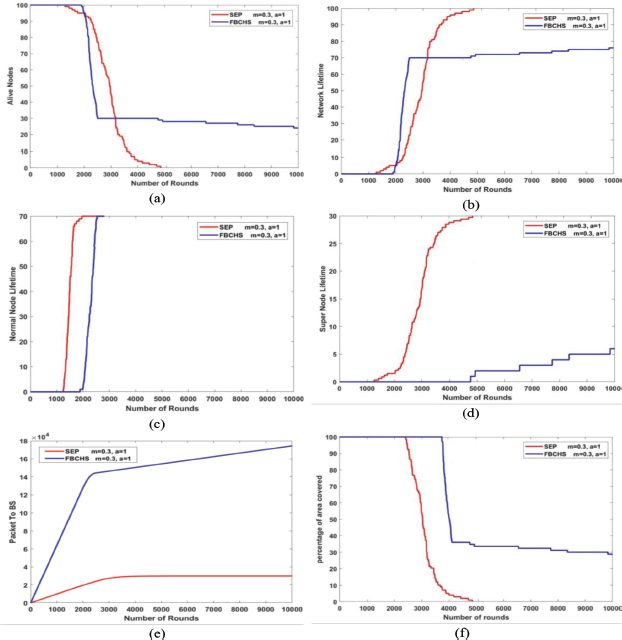
Figure 8. Simulation Performance of SEP and FBCHS. (a) The number of Alive Nodes in SEP and FBCHS, (b) Network Life- time of SEP and FBCHS, (c) Lifetime of Normal Node in SEP and FBCHS, (d) Lifetime of Super Node in SEP and FBCHS, (e) Packet Transmitted to BS in SEP and FBCHS, (f) Percentage of the area covered by SEP and FBCHS.
The RE of Super Nodes in different regions after the 10000 successful rounds of packet transmission is shown in the figure below. Region 1 Super Nodes have 4.4837 joules of remaining energy, region 2 has 4.4861 joules, region 3 has 1.9979 joules, and region 4 has 2.0012 joules of remaining energy. Region 5 Normal Node energy is exhausted completely due to the direct data transmission to BS as shown in Figure 9.
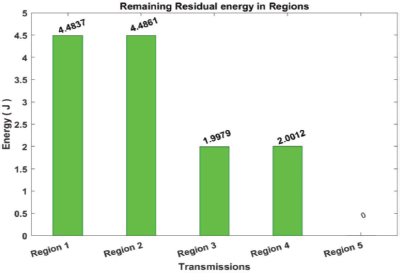
Figure 9. Remaining Energy of Super Nodes in each region
The FBCHS protocol Super Node is alive after 10000 successful transmissions of data. The FBCHS protocol has an overall network lifespan of 13700 rounds, while the SEP protocol network lifetime is 4725 rounds. The red line in Figure 10 indicates that all the nodes in SEP die after 4225 rounds, thus, the lifetime is constant.
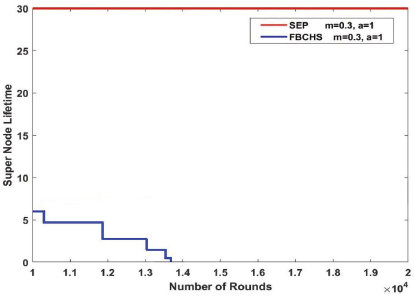
Figure 10. Overall Network Lifetime of SEP and FBCHS
The FBCHS protocol has a much better stability period than the SEP protocol. The SEP protocol trans- mits 3 × 104 packets to BS, afterwards it goes constant because all the nodes’ die following a successful round of packet transmission in the network. The FBCHS protocol successfully transmitted 2.1 × 105 pack- ets to BS, which is much more than the SEP protocol as shown in Figure 11.
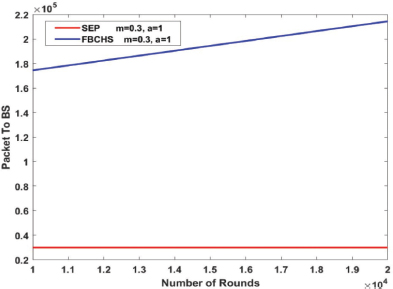
Figure 11. Packet Transmitted to BS in SEP and FBCHS
The FBCHS protocol Super Nodes are alive after 10000 rounds, therefore, they cover the network area much more compared to the SEP protocol (because all nodes die at 4725 rounds in SEP). The FBCHS protocol covers the network area for 13700 rounds as shown in Figure 12.
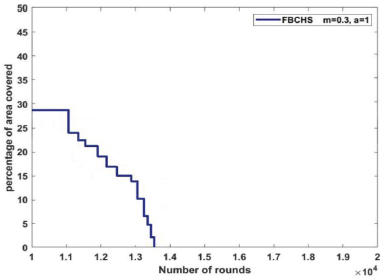
Figure 12. Percentage of the area covered by SEP and FBCHS
6. Conclusion and Future Work
The conservation of node energy is a crucial issue for the sensor network. Cluster-based protocols have proven to be a more effective solution for prolonging the network lifespan. The distribution of Super and Normal Nodes, in the regions, on the basis of energy levels. The proposed FBCHS protocol shows efficient utilization of energy in the network. The SEP protocol assigned weight probability to every node. The FBCHS protocol selected an optimal number of cluster heads per round to enhance the node residual energy of the network. The number of the alive Super Nodes in the FBCHS protocol was significantly higher than in the SEP Protocol. The efficiency of the FBCHS protocol has been contrasted with SEP protocol for stability period, alive nodes number, network lifetime, packet transmitted to BS, percentage of area covered, residual energy of the node, and enhanced network performance. In future research, we will focus on the effectiveness of sensor nodes in a mobility environment and cluster head selection mechanism using a genetic approach, which provides optimal clusters and cluster nodes in the network so that the lifetime of the network will be enhanced.
References
Batra, P. K., and Kushwah, R., 2019. ‘Fuzzy Logic based Cluster Head Selection method for Heterogeneous Wire- less Sensor Networks’, in 2019 Fifth International Conference on Image Information Processing (ICIIP), pp. 86–90.
Behzad, M., 2018. ‘M-BEHZAD: minimum distance based energy efficiency using hemisphere zoning with ad- vanced divide-and-rule scheme for wireless sensor networks’, arXiv preprint arXiv:1804.00898.
Choudhary, S., et al., 2022. ‘Fuzzy Approach-Based Stable Energy-Efficient AODV Routing Protocol in Mobile Ad hoc Networks’, in Software Defined Networking for Ad Hoc Networks. Springer, pp. 125–139.
Deepa, O., and Suguna, J., 2020. ‘An optimized QoS-based clustering with multipath routing protocol for wireless sensor networks’, Journal of King Saud University-Computer and Information Sciences, 32(7), pp. 763–774.
Dwivedi, A. K., and Sharma, A., 2020. ‘FEECA: Fuzzy based Energy Efficient Clustering Approach in Wireless Sensor Network’, EAI Endorsed Transactions on Scalable Information Systems, 7(27).
Elhoseny, M., et al., 2020. ‘Swarm intelligence--based energy efficient clustering with multihop routing protocol for sustainable wireless sensor networks’, International Journal of Distributed Sensor Networks, 16(9), p. 1550147720949133.
Faiz, M., and Daniel, A. K., 2020. ‘Fuzzy Cloud Ranking Model based on QoS and Trust’, in 2020 Fourth Interna- tional Conference on I-SMAC (IoT in Social, Mobile, Analytics and Cloud)(I-SMAC), pp. 1051–1057.
Jayaraman, G., and Dhulipala, V. R., 2021. ‘FEECS: Fuzzy-Based Energy-Efficient Cluster Head Selection Algo- rithm for Lifetime Enhancement of Wireless Sensor Networks’, Arabian Journal for Science and Engineering, pp. 1–11.
Kumar, S., et al., 2021. ‘Division Algorithm Based Energy-Efficient Routing in Wireless Sensor Networks’, Wire-less Personal Communications, pp. 1–20.
Latif, K., et al., 2015. ‘Energy hole minimization with field division for energy efficient routing in WSNs’, Interna-tional Journal of Distributed Sensor Networks, 11(10), p. 953134.
Latif, K., et al., 2016. ‘Energy consumption model for density controlled divide-and-rule scheme for energy efficient routing in wireless sensor networks’, International Journal of Ad Hoc and Ubiquitous Computing, 21(2), pp. 130–139.
Maurya, S., and Daniel, A. K., 2015. ‘Rbhr: Region-based hybrid routing protocol for wireless sensor networks using ai technique’, in Proceedings of Fourth International Conference on Soft Computing for Problem Solving, pp. 37–52.
Mehra, P. S., Doja, M. N., and Alam, B., 2020. ‘Fuzzy based enhanced cluster head selection (FBECS) for WSN’, Journal of King Saud University-Science, 32(1), pp. 390–401.
Narayan, V., and Daniel, A. K., 2019. ‘Novel protocol for detection and optimization of overlapping coverage in wireless sensor networks’, Int. J. Eng. Adv. Technol, 8.
Narayan, V., and Daniel, A. K., 2020. ‘Multi-Tier Cluster Based Smart Farming Using Wireless Sensor Network’, in 2020 5th International Conference on Computing, Communication and Security (ICCCS), pp. 1–5.
Narayan, V., and Daniel, A. K., 2021. ‘RBCHS: Region-Based Cluster Head Selection Protocol in Wireless Sensor Network’, in Proceedings of Integrated Intelligence Enable Networks and Computing. Springer, pp. 863–869.
Narayan, V., and Daniel, A. K., 2021. ‘A novel approach for cluster head selection using trust function in wsn’, Scalable Computing, 22(1), pp. 1–13. doi: 10.12694:/scpe.v22i1.1808.
Narayan, V., and Daniel, A. K., 2022. ‘CHHP: coverage optimization and hole healing protocol using sleep and wake-up concept for wireless sensor network’, International Journal of System Assurance Engineering and Manage- ment, pp. 1–11.
Nazari Talooki, V., Rodriguez, J., and Marques, H., 2014. ‘Energy efficient and load balanced routing for wireless multihop network applications’, International Journal of Distributed Sensor Networks, 10(3), p. 927659.
Sharma, G., and Kumar, A., 2018. ‘Improved DV-Hop localization algorithm using teaching learning based optimi- zation for wireless sensor networks’, Telecommunication Systems, 67(2), pp. 163–178.
Shivappa, N., and Manvi, S. S., 2019. ‘Fuzzy-based cluster head selection and cluster formation in wireless sensor networks’, IET Networks, 8(6), pp. 390–397.
Singh, K., and Daniel, A. K., 2015. ‘Load Balancing in Region Based Clustering for Heterogeneous Environment in WSNs Using AI Techniques’, in 2015 Fifth International Conference on Advanced Computing & Communication Technologies, pp. 641–646.
Sirsikar, S., and Chandak, M., 2018. ‘Efficient Clustering using Concentric Rings and Rectangular Region For- mations in Wireless Sensor Networks’, International Journal of Applied Engineering Research, 13(6), pp. 3483–3491.
Tang, W., Zhang, K., and Jiang, D., 2018. ‘Physarum-inspired routing protocol for energy harvesting wireless sensor networks’, Telecommunication Systems, 67(4), pp. 745–762.
Wan, C., and Du, S., 2011. ‘Improvement and simulation of leach in wireless sensor networks’, Jisuanji Yingyong yu Ruanjian, 28(4), pp. 113–116.
Yang, L., et al., 2018. ‘An unequal cluster-based routing scheme for multi-level heterogeneous wireless sensor net- works’, Telecommunication Systems, 68(1), pp. 11–26.
Authors’s Biography

Vipul Narayan received the B. Tech degree in Computer Science & Engineering from M.D.U. Rohtak, India in 2012 and M. Tech degree in Computer Science Engineering from M.M.M. University of Technology, Gorakhpur, India in 2016. Now he is research scholar in department of Computer Science & Engineering from 2018 to till date. His current research interests in Wireless Sensor Network. He has published 16 papers in International Journal and International conferences.

A.K. Daniel is currently working as a Professor in the Department of Computer Science and Engineering, M.M.M. University of Technology, Gorakhpur and has an experience of over 35 years in teaching and research. He is a senior member of IEEE, ACM, CSI and various others. He had published over 100 papers in the national as well as international conferences and journals. He has guided a number of research scholars of post graduate level. His research interest includes wireless communication, artificial intelligence and mobile ad hoc network protocols.